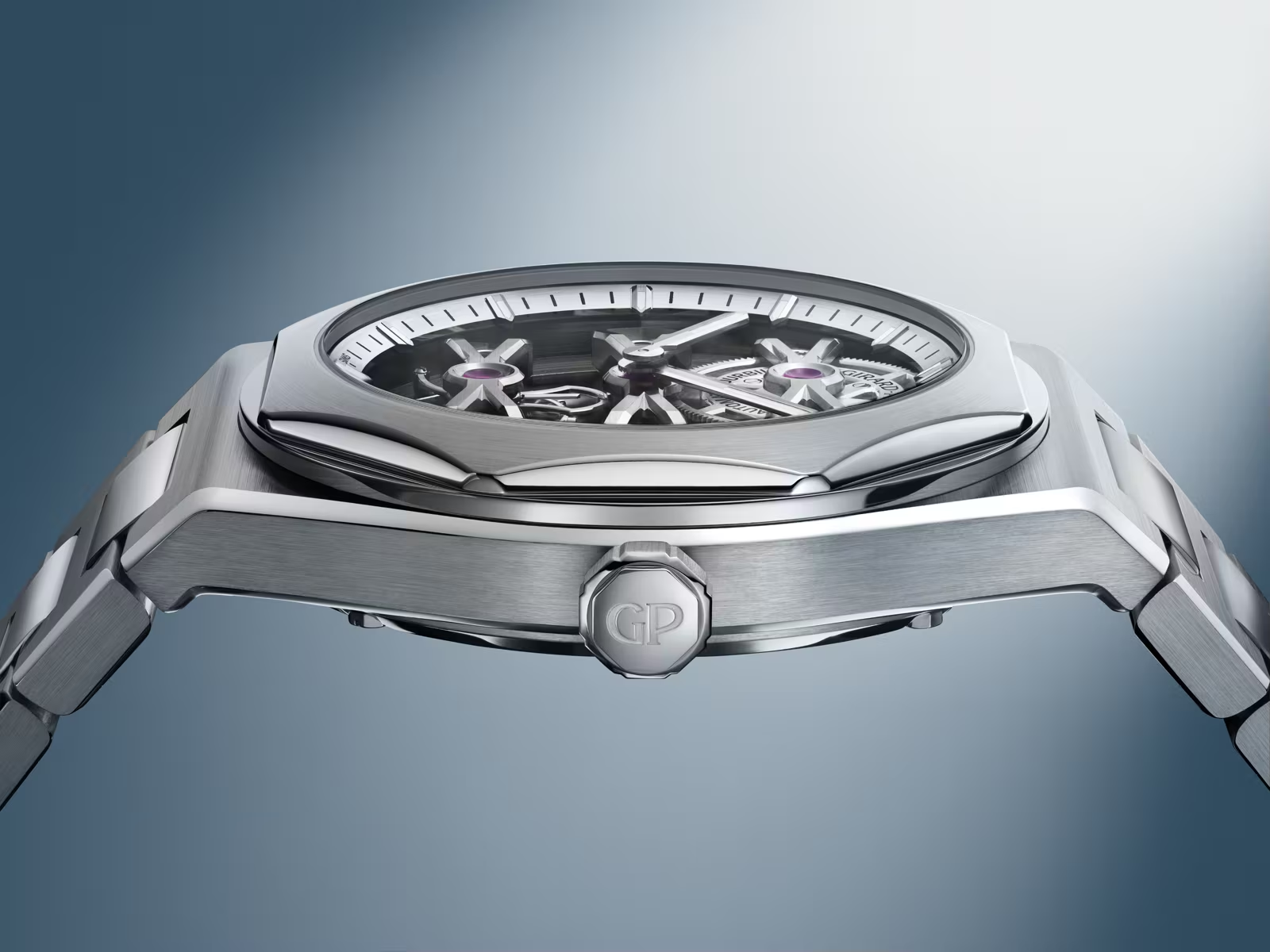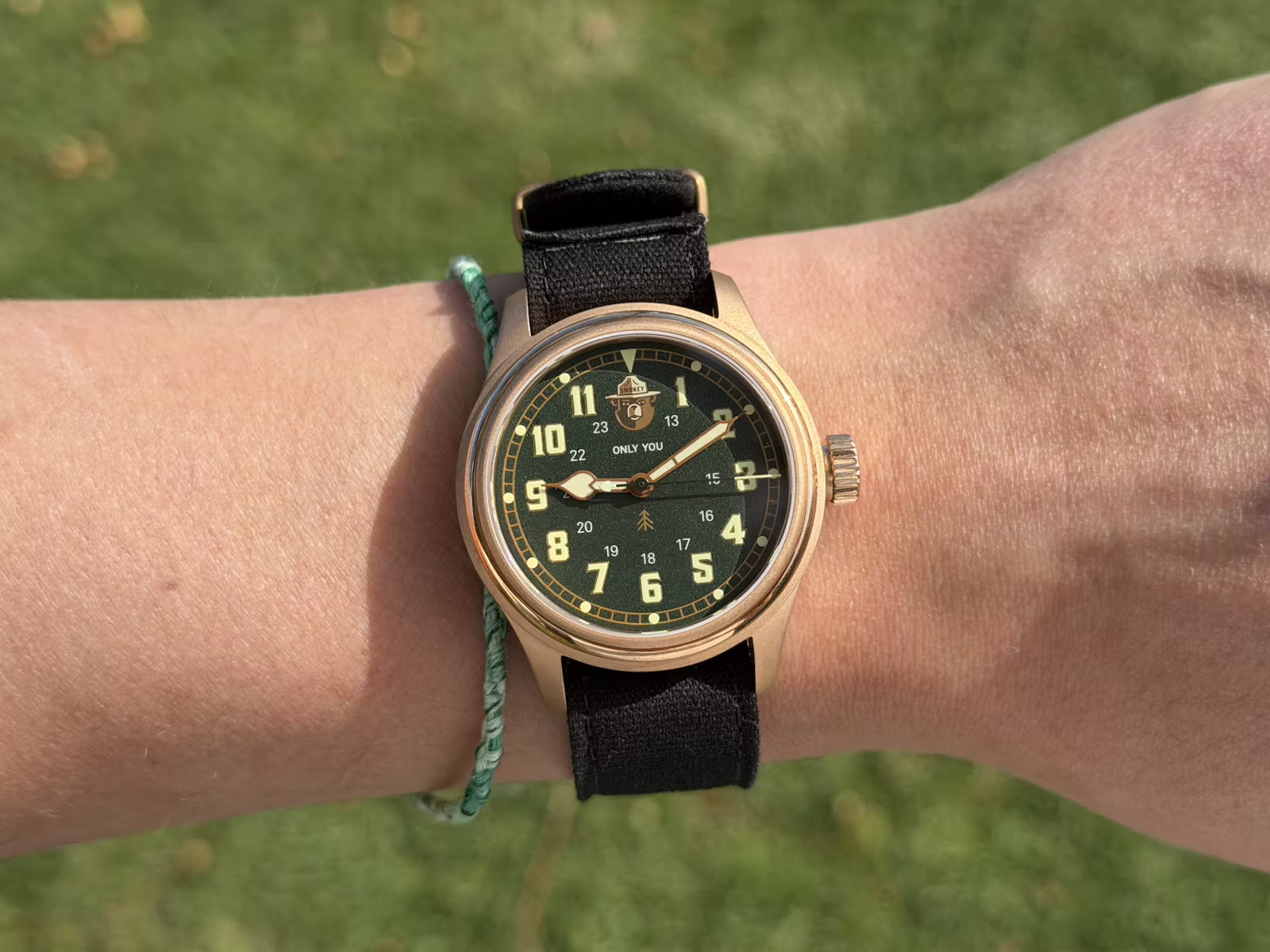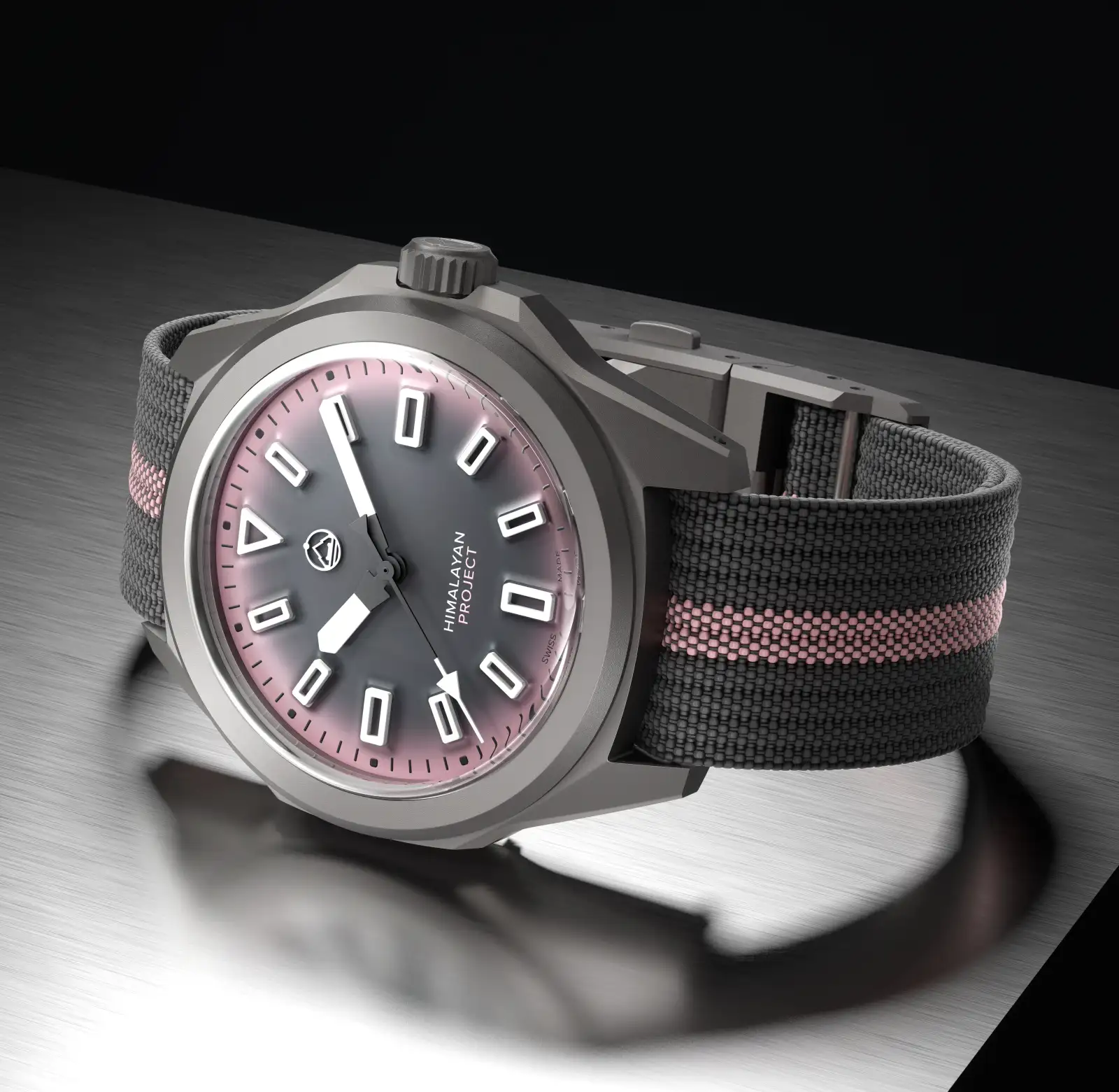The Bovet Museum And A Trip To The East
The day started at the Bovet’s manufacture in Tramelan, continued in the final assembly building at the Château de Môtiers, and concluded in the Museum.
The sun was setting over Môtiers when a white tesla pulled into the cobblestone courtyard of the Château.
It was my chariot home, ready to take me away from this horological dream I was having. Fanette, who had organised my trip was keeping an eye on the time and didn’t want to keep my ride waiting too long. I had other plans. “If I ignore her” I thought to myself, “She won’t make me leave”. I looked a little closer at the Recital 12 I was holding in an attempt to avoid her gaze. I didn’t want this day to end.

We were sitting around a wooden table with, Keith (Head Of Content) and the lovely couple I had spent the day with. The entire Bovet collection was in front of us as we passed the watches around like millionaire pass the parcel. It was a feast for the eyes and totally overwhelming in the best way possible.
Still avoiding Fanette’s kind but punctual eyes, I tried on watch after watch. From the intricate Virtuoso VII to the sporty APERTO 1 designed by Pininfarina (one of my favourites). ‘This can't be real’ I said to myself for the tenth time.

The day started at the Bovet’s manufacture in Tramelan, continued in the final assembly building at the Château de Môtiers, and concluded at the Museum, just across the cobblestone courtyard. Around the outside were display cases full of watches that span the entire history of Bovet, from early pocket watches to chronographs and even watches with dials made of sugar. The collection belongs to Pascal Raffy, who had been an avid Bovet collector well before he purchased the company in 2001. The museum feels lived in and warm, with couches in the centre, art on the walls and books on the coffee table. If I ever move to Switzerland, this is where I’ll live.
Before we take a look at the treasures hidden inside the Museum, we need to take a journey back in time to a place you may not expect. One that is far from the idyllic Val-de-Travers, the Château de Môtiers and the safe confines of Switzerland’s mountainous borders. To understand the watches Pascal has collected, and to learn of Bovet’s origins, we must go east.
Édouard Bovet Lands In China
Born to a watchmaker father, Édouard Bovet was one of five children and was described, by who, I’m not sure, as “a chubby little fellow”. Brutal
Living in London in the early 19th century, Édouard worked for a Chinese trading company called Magniac & Co and was sent to Guangzhou onboard an East India Company ship, the Orwell. On his long journey he passed the time drinking, teaching his shipmates fencing and hilariously naming the things he saw. One such name was “Swiss Grasshopper” for a black and red bird he didn’t recognise. A fantastic name for a small bird, and one that I might use from now on. I could write a whole article on the eccentricities of Édouard, perhaps another time.

Setting foot on the banks of the Pearl River in Guangzhou on August 16 1818, he soon recognised the huge potential of the Chinese market. Amongst the upper classes, there was a thirst for intricate clocks and beautifully decorated goods from Europe.
Édouard’s experience working for Magniac & Co in the Factory district, the only place foreigners were allowed to do business, put him in a good position to take advantage of his family's history in this exciting new market that was only just opening up to the world. So, along with his brothers, Édouard formally established Bovet on May 1, 1822. Charles-Frederic and Charles-Alphonse were to handle logistics from London and their other brother Claude-Gaspard-Philippe-Gustave (that’s seriously his name) would be responsible for manufacturing back in Fleurier, Switzerland. The watches would be shipped to Guangzhou to be sold and over the first eight years of operation, the Bovet brothers sold 3,817 watches in China, an incredible amount considering only 312 were sold in London during the same time period. The Chinese market was well and truly a beast and remains so until today.

Bovet pocket watches became so popular in China that they even influenced the local terminology, the brand name becoming a generic term for fine watches, 播喴 in the local language.
For almost a century when the company operated in China, they produced some extremely intricate and beautiful pocket watches for the Chinese upper classes. They were prized for their enamel work, mechanical precision and their ability to withstand the humid local climate of Southern China. Emperor Daoguang of the Qing Dynasty was a prominent owner of Bovet watches, and the whole country was enamoured with these small mechanical marvels.
Ingeniously made corresponding to the laws of nature, including both yin and yang. The gears turn in the dark, the hands point to precisely the correct time of day. - Emperor Yongzheng

It’s important to point out here that the Bovet brothers didn’t just import European-style watches into China, but truly embraced the local culture and created pieces that reflected the artistic values of the Chinese People at the time. It’s these watches that drew me in most at the museum.
Highlights Of The Bovet Museum
Glass cabinets surround the room and in each one a piece of horological history dating back centuries. I only had a minute or two at each one as Fanette was setting up the round table with the current collection so I had to be quick. Many of these watches were purchased by Pascal prior to him buying the company and some were acquired after. He is one of the brand's biggest collectors, so much so that he collected the company itself.

Pocket Watch With Portrait Of a Chinese Woman
With portraits being popular in the West at the time, this enamel depiction of a Chinese woman on a gilded silver case is utterly breathtaking. The floral blue and red decoration frames figure beautifully and the deep square background makes it feel like the woman is actually in there. It’s my favourite piece in the collection.


Silver Traditional Chinese-style Watch
Encased in an engraved silver hunting case, this watch is a pure expression of Bovet’s connection to China. The main plate of the movement carries the two Chinese characters for Bovet (播喴) and the dial features a mix of Chinese and Roman numerals. The former is marked using traditional Chinese units of time and around the edge of the case there are eight quarter hour markers also in Chinese. Extremely cool.


Painted Enamel Pocket Watch With Romeo and Juliet
Landing firmly back in the west with a micro painting of the two lovers, Romeo and Juliet (plus a third in the back, not sure who she is, am I sensing a love triangle?) this pocket watch is as ornate as it gets. Its 18-carat gold case is inlaid with pearls and its enamel dial features a gorgeous seconds indicator at six. I would love to see a renaissance of watches with pearl inlays. Bring it back Bovet.

Along with my three favourites, there were relatively modern chronograph wristwatches, minute repeaters, and engraved movements that looked like they were sprinkled with diamonds. The museum is a sight to behold.


Back To The Future And Back Down To Earth
Fanette’s gaze was starting to wear a hole through my defences. My car had arrived and the driver was getting impatient. “Just a couple more,” I say to Fanette, as I take the green dial recital 12 in my hand and slip it over my wrist. The day was almost at its end and I wanted to leave knowing I had experienced everything.

After thinking about it, the Recital 12 was the perfect last watch to try on at the Bovet Museum. The watch symbolises the start of a new era for the brand, one where they travel to places they’ve never been before. It’s their first-ever bracelet watch and just like Édouard did when he stepped off the Orwell with wobbly legs onto the banks of the Pearl River, it’s a new frontier. As was this day for me.
During my visit to Bovet, I couldn’t quite shake the feeling that I didn’t belong there. Keith, Fanette and the rest of the team most definitely aren’t at fault, they couldn’t have been more welcoming, but as I walked around the manufacture in the morning, and the Château de Môtiers in the afternoon, I was constantly thinking how much of a privilege it was to be there.
I don’t belong in this world, but I wouldn’t have it any other way.

I want to stay in awe of people like Mr Raffy and of brands like Bovet, and if I'm welcomed me into his world again one day, I’ll be just as excited as I was the first time.
The white Tesla drove through the night a dropped me at the nearest train station, where I would make my way to the budget airport capsule hotel that would have me until morning. Sleep didn’t come easily, so I stared at a picture of a mountain printed on the ceiling until the excitement of the day wore off. It took a while.

I’ve been writing watch articles for two years now and sitting in my living room in Melbourne, I have to remind myself that my trip to Bovet actually happened. As I take my kids to school, clean the dishes and pat my ginger cat on the couch, I’m reminded to always keep my feet on the ground, even if my head drifts up into the clouds of Château de Môtiers, listening to the gentle chirping of Swiss Grasshoppers around me.

Again, I want to say a huge thank you to Fanette, who organised my visit, drove me around and educated me on the customs of proper fondue consumption. To Keith who made me laugh, taught me about Bovet and rode a little too quickly on his motorbike. To the entire Bovet team who welcomed me into their home at the top of a mountain and to the Mexican couple who let me share their experience with them, what a time we had!
Merci Beaucoup!
Cya in the next one x
P.S. If you haven’t read parts one and two of this series, please do so!
P.P.S Here's a shot of my capsule hotel at Zurich Airport. I had a blast!
.avif)
.webp)


This story was created in partnership with our good friends at .

.avif)
.webp)
.png)


